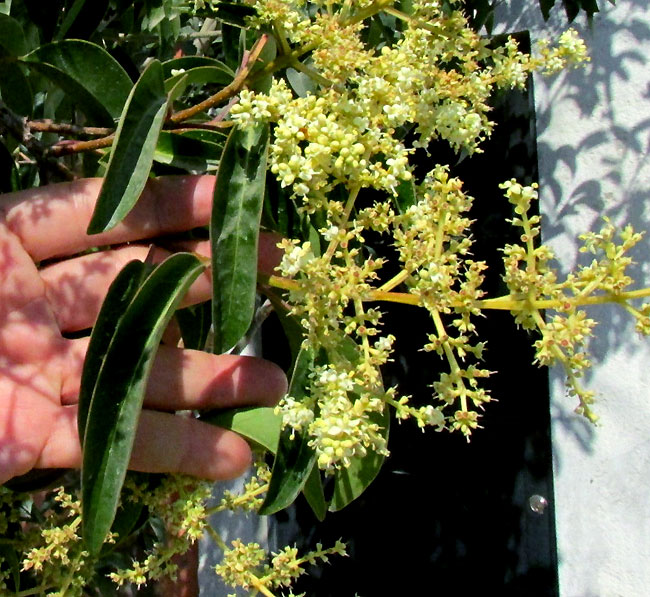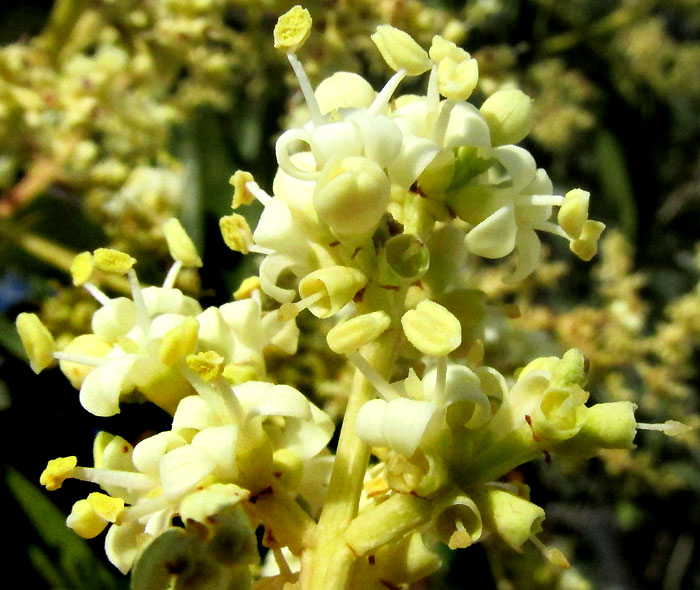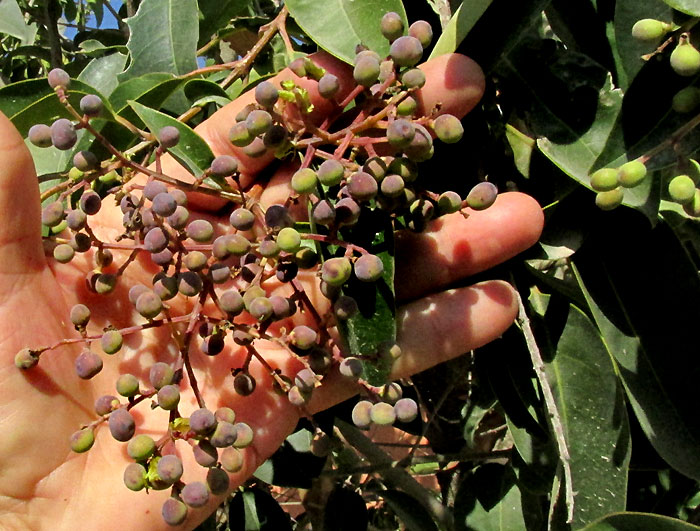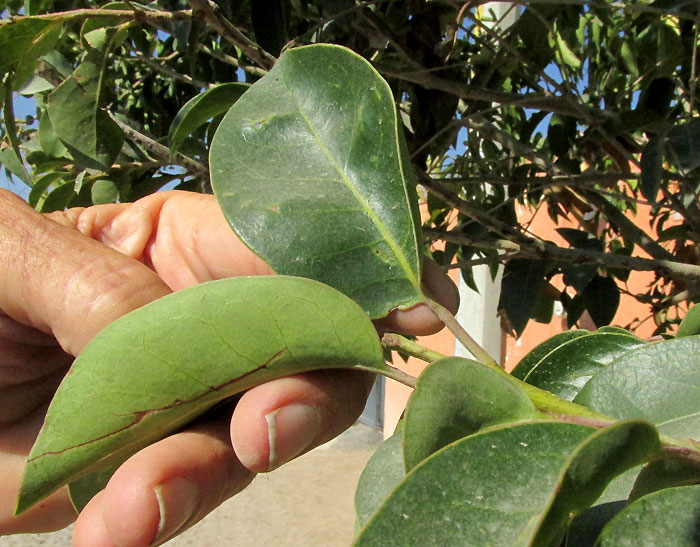Excerpts from Jim Conrad's
Naturalist Newsletter
entry dated January 1, 2023, issued from near Tequisquiapan, elevation about 1,900m (6200 ft), ~N20.57°, ~ W99.89°, Querétaro state, MÉXICO
CHINESE PRIVET FLOWERING

A tree along a backstreet in a small village near Tequisquiapan bore a large panicle of small, white flowers, shown above. At first glance the big flowering head suggested an Avocado tree, but a closer look at the flowers said otherwise:

Avocado flowers, though somewhat similar, bear several stamens, while each of these blossoms produced only two. The first plant family to think of when you see a tree's flowers bearing only two stamens is the Olive Family, the Oleaceae, and when other of the tree's branches were searched, one of them bore drupes turning blue-black, looking vaguely like olives:

The leaves were evergreen, simple and with no teeth or lobes along the margins, thus shaped like olive tree leaves, though olive leaves are smaller and silvery.

Leaves arose opposite one another on the stems, which also is typical of the Olive Family:

This small, handsome tree is LIGUSTRUM LUCIDUM, a solid member of the Olive Family. In English it's mostly called Chinese Privet, though that name is shared with another Ligustrum species. It's also known as the Broad-leaf Privet, Glossy Privet, Tree Privet and Wax-leaf Privet. It's native to southern China, Korea and Japan but grown ornamentally worldwide, not only because it's attractive but also because it thrives in many kinds of well-drained soils, does well in full sunlight to partial shade, and is somewhat winter tolerant. Unfortunately, in many places it's escaped into the landscape to become a self-seeding weed-tree, forming dense thickets which crowd out native plants. And it's hard to root out once it's established.
One of its names, Wax-leaf Privet, points to its use in China for culturing wax insects. Wax insects are introduced onto the tree, where they secrete wax, which is harvested for candle-making, medicinal use, and other purposes. It's been used in traditional Chinese medicine for over a thousand years, said to cure illnesses ranging from premature menopause, blurred vision, tinnitus, heart palpitations, backache to insomnia. In fact, research has shown that its extracts show antitumor activity, that it increase the white blood-cell count, and is useful for preventing bone marrow loss during cancer chemotherapy. The uses are too numerous to list. More information, with sources, is provided on the species' PFAF.Org page.